Webinar on The New AISI Shear Wall Design Guide – AISI-D113-19
$100.00
Continuing Education Credits Available – 1.5 PDH Credits
The webinar will provide an overview of shear wall design principles as presented in AISI D113-19 including: Load Path; Wind and Seismic Considerations; Type I and II Shear Wall concepts; Shear Wall Deflection. Design examples will also be presented.
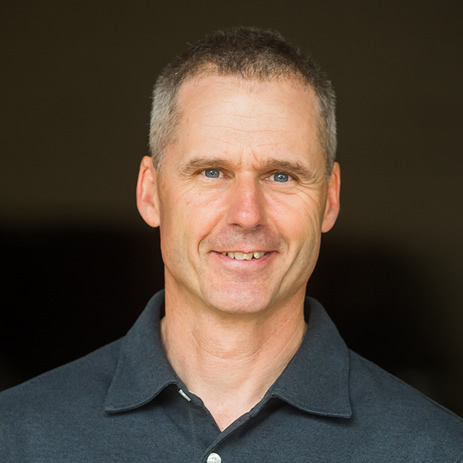
Presenter: Robert L. Madsen, P.E., Devco Engineering, Inc.
Robert Madsen is a Principal with Devco Engineering, Inc. in Enterprise, Oregon where he specializes in the design of cold-formed steel framing. He serves on the American Iron and Steel Institute (AISI) Committee on Specifications (COS) and Committee on Framing Standards (COFS), where he is chairman of the Lateral Subcommittee. He is also chairman of the Technical Review Committee of the Cold-Formed Steel Engineers Institute (CFSEI).
In order to receive credit for this course, you must complete the quiz at the end and pass with at least 80% for a certificate to be generated automatically
Related Products

Webinar on Cold-Formed Steel Framing Design with Data-Driven Models
Continuing Education Credits Available – 1.5 PDH Credits
A historical challenge for the cold-formed steel industry has been the generation of many disparate physical test data sets without much dedicated effort on collecting and curating that data. A non-profit data-driven Initiative was recently launched to address this knowledge gap, and the Initiative’s mission is to make high quality physical test data accessible to anyone. This webinar will discuss a plan for using emerging data-driven tools to design cold-formed steel framing. The webinar will present a convincing case for how data-driven models can reduce the hoops an engineer has to jump through to design cold-formed steel framing. Cris will use examples to highlight the first open databases and supporting data tools from the Initiative that are now becoming available.
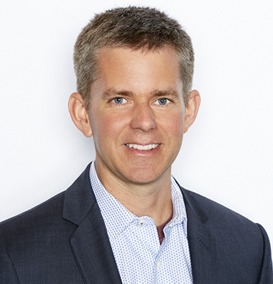
Cristopher D. Moen, Ph.D., P.E., F.SEI
RunToSolve LLC
Cris Moen is CEO and President of RunToSolve LLC, a software R&D company founded in 2019 that specializing in structural system analysis and design automation.
Cris started his career as a bridge engineer at J. Muller International (1997-2002) and Parsons Corporation (2002-2004). He completed his Ph.D. at Johns Hopkins University (2004-2008) focusing on thin-walled structures and cold-formed steel, working up to Associate Professor at Virginia Tech (2008-2016), and since 2017 has served as a part-time faculty member at Johns Hopkins University. From 2013 to 2018 Cris was CEO of NBM Technologies, Inc., an academically-rooted engineering consulting company that completed over 100 projects across building construction, solar, and aerospace industry sectors.
In order to receive credit for this course, you must complete the quiz at the end and pass with at least 80% for a certificate to be generated automatically

Webinar on Mid-Rise Construction using Light Weight Steel Framing
Continuing Education Credits Available – 1.5 PDH Credits
The webinar will cover light gauge steel wall framing and C-joists, composite deck and concrete, precast concrete, steel beams and deck and light gauge steel trusses. It will review wall and floor, fire and sound assemblies, panelization of walls, structural floor systems, lateral stability, roof design, shear wall deflection compared to wood, progressive collapse, and overall approval process. The webinar will also review completed projects.
Presenter: Raymond van Groll, M.Sc.(Eng), P.Eng.,
Atkins + Van Groll Inc.
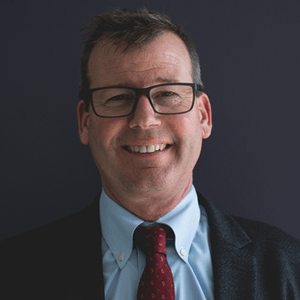
Raymond van Groll, M.Sc.(Eng), P.Eng., Managing Partner of Atkins + Van Groll Inc. With over 25 years of experience, van Groll specializes in mid-rise structural buildings and light gauge steel construction. In 1990, he founded Van Groll Engineering Inc., a structural professional engineering company specializing in residential and commercial construction and light gauge steel design. In 1997, he co-founded Atkins + Van Groll Inc. Consulting Engineers with Jonathan Atkins.
Raymond van Groll assisted in the development of the Canadian Sheet Steel Building Institute (CSSBI) “Lightweight Steel Framing Design Manual.” Some of his most notable projects include Chelster Hall Estate in Oakville, the Louis Vuitton Flagship Store in Toronto, The Rosseau, J.W. Marriott Resort & Spa, and Corktown Condominiums in Toronto.
In order to receive credit for this course, you must complete the quiz at the end and pass with at least 80% for a certificate to be generated automatically

Webinar on Practical Allyship – 5 Actions Anyone Can Do to Promote Inclusion at Work
Continuing Education Credits Available – 1.5 PDH Credits
Creating an inclusive work environment is not just the “right thing to do.” Inclusive behaviors are tied to higher levels of individual performance and firm profits; yet creating and working in an inclusive work environment often feels elusive, as evidenced by the fact that almost two-thirds of workers are disengaged at work.
In this interactive session, you will learn about the business case for inclusive work cultures and five simple actions anyone can take to create a more inclusive work environment for those they work with, regardless of current role or firm size. Applicable to everyone from new graduates to CEOs, these strategies have been shown to create a more inclusive work environment while requiring little time or budget to implement. When implemented consistently, these strategies create better work cultures for everyone and improve the retention of coworkers in traditionally marginalized gender, racial, and ethnic groups. You will leave this session empowered with specific actions you can immediately apply to engineer inclusion in your everyday interactions.
Presenter: Stephanie Slocum, P.E., Engineers Rising LLC
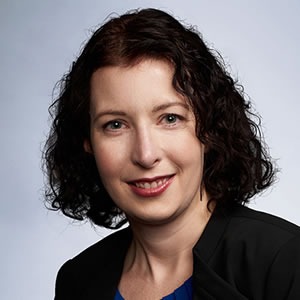 Stephanie Slocum, P.E. is the founder of Engineers Rising LLC and author of “She Engineers: Outsmart Bias, Unlock Your Potential, and Live the Engineering Career of your Dreams.” Stephanie shines light on the barriers to the retention of engineers and provides practical training, inspiration, and mentorship through her online platform and programs. She is a champion of inclusive work cultures.
Stephanie Slocum, P.E. is the founder of Engineers Rising LLC and author of “She Engineers: Outsmart Bias, Unlock Your Potential, and Live the Engineering Career of your Dreams.” Stephanie shines light on the barriers to the retention of engineers and provides practical training, inspiration, and mentorship through her online platform and programs. She is a champion of inclusive work cultures.
Stephanie is the current chair of the Structural Engineering Institute’s (SEI) Business Practices committee. She is currently serving as an elected member of SEI’s Board of Governors and is a member of the American Society of Civil Engineers (ASCE) Task Committee on the Code of Ethics. She is a winner of the 2020 Connected World’s Women in Technology Award for her work empowering women in engineering. Prior to founding Engineers Rising, she worked in structural engineering building consulting for 15 years. She holds bachelor’s and master’s degrees in architectural engineering.
In order to receive credit for this course, you must complete the quiz at the end and pass with at least 80% for a certificate to be generated automatically

Webinar on Devil in the Details: Learning from Mid-Rise Successes and Failures
Continuing Education Credits Available – 1.5 PDH Credits
Industry veteran Don Allen provides insights, photos, and details from projects that have worked, and some that have not. With over 25 years of both Engineer-of- Record and CFS specialty engineer experience, Allen will show both design examples and field photos / repairs where problems have been avoided / created / resolved on CFS framing projects. Allen will discuss each specific design challenge, why a certain approach was taken, what went right with the design and construction, and what could have been done differently for conditions that did not work. Allen will also discuss some of his recent work overseas, and how innovations worldwide are shaping CFS construction in North America.
 Presenter: Don Allen, P.E., Super Stud Building Products, Inc.
Presenter: Don Allen, P.E., Super Stud Building Products, Inc.
Don Allen, P.E. currently serves as Director of Engineering for Super Stud Building Products, Inc., where he oversees product development, testing, engineering, and technical services. Having worked in the cold-formed steel industry since 1990, Allen served as a CFS specialty engineer, Engineer-of-Record, and industry representative before his current position with a stud manufacturer. He concurrently served for more than 9 years as Technical Director for three associations in the cold-formed steel industry – the Steel Stud Manufacturers Association (SSMA), the Steel Framing Alliance (SFA), and the Cold-Formed Steel Engineers Institute (CFSEI). He chairs the Education Subcommittee of the American Iron and Steel Institute’s Committee on Framing Standards and Committee on Specifications, and was the 2013 recipient of the CFSEI Distinguished Service Award. He has given presentations on CFS in China, Colombia, Egypt, Hawaii, and South Africa, and has been involved in design projects in North America, Africa, and Europe.
In order to receive credit for this course, you must complete the quiz at the end and pass with at least 80% for a certificate to be generated automatically

Webinar on Frequently Misunderstood Wind Load Topics for Cold-Formed Steel Structures
Continuing Education Credits Available – 1.5 PDH Credits
The webinar will focus on wind provisions of ASCE 7/ IBC (International Building Code) that are frequently misunderstood or incorrectly applied with a particular emphasis on cold-formed steel structures, including building enclosure classification, torsional wind design, wind load analysis methods, canopies, rooftop screen walls, and effective wind area. It will also focus on ASCE 7-16 changes and explore the future of wind design.
Presenter: Emily Guglielmo, P.E., S.E., F.SEI, Martin/Martin
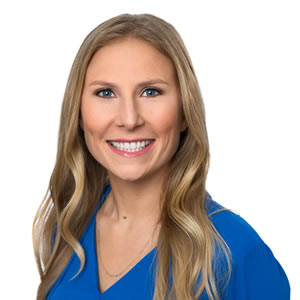
Emily Guglielmo, P.E., S.E., F.SEI, a Principal with Martin/Martin, will conduct the webinar. With more than 15 years of structural engineering experience, Emily began her career in the Denver, Colorado office of Martin/Martin and now manages the firm’s San Francisco Bay area office. She is President of the National Council of Structural Engineers Associations (NCSEA) and President of the Structural Engineers Association of Northern California (SEAONC). She is also the Chair of the NCSEA Wind Engineering Committee and Vice Chair of the ASCE 7 Seismic Subcommittee. She serves as a voting member on the ASCE 7 Wind, Seismic, and Main Committees. Emily has presented more than 100 lectures on seismic, wind, and building code provisions both nationally and internationally. She has received several awards, including SEI Fellow and the Susan M. Frey NCSEA Educator Award for effective instruction for practicing structural engineers. Emily earned her bachelor’s degree in Civil Engineering from UCLA and her master’s degree in Structural Engineering from UC Berkeley.
In order to receive credit for this course, you must complete the quiz at the end and pass with at least 80% for a certificate to be generated automatically

Webinar on Fire and Cold-Formed Steel Design
Continuing Education Credits Available – 1.5 PDH Credits
Fire Resistance of Wall, Floor & Ceiling Systems
The presentation will begin with a review of the standards used to test both wall and floor/ceiling assemblies. Special attention will be given to factors that affect the design of systems with cold-formed steel, and some comparisons will be made to wood-framed systems. Several UL-certified fire designs will be described that showcase how structural factors can affect fire design.
Presenter: Kyle Flondor, United States Gypsum Corporation.
 Kyle Flonder is a Senior Researcher, Building Science (Fire) at United States Gypsum Corporation. He received his Bachelor of Science degree in Industrial Engineering from the University of Iowa. From 2006-2017, he was project engineer in UL’s Fire Protection Division, responsible for the evaluation and certification of fire containment and building fenestration products. He moved to USG in 2017 to support the evaluation of USG products and systems through testing and analysis. He is one of the principal USG engineers who work with accredited testing agencies, and he assists most Authorities Having Jurisdiction with large and small projects involving USG products and fire designs.
Kyle Flonder is a Senior Researcher, Building Science (Fire) at United States Gypsum Corporation. He received his Bachelor of Science degree in Industrial Engineering from the University of Iowa. From 2006-2017, he was project engineer in UL’s Fire Protection Division, responsible for the evaluation and certification of fire containment and building fenestration products. He moved to USG in 2017 to support the evaluation of USG products and systems through testing and analysis. He is one of the principal USG engineers who work with accredited testing agencies, and he assists most Authorities Having Jurisdiction with large and small projects involving USG products and fire designs.
In order to receive credit for this course, you must complete the quiz at the end and pass with at least 80% for a certificate to be generated automatically

Webinar on Cold-Formed Steel Floor System
Continuing Education Credits Available – 1.5 PDH Credits
This webinar will focus on the ideation, development, analysis and experimental evaluation of an innovative lightweight modular floor system utilizing cold-formed steel. As part of a research project funded by the American Institute of Steel Construction (AISC), researchers at the University of Kansas developed a novel floor system composed primarily of cold-formed steel, intended for modular use in steel-framed buildings. The webinar will highlight the background and initial development of the floor system, including design and construction considerations and corresponding analyses. As rapid fabrication, vibration mitigation and diaphragm behavior were emphasized in the development of the floor system, experimental testing of the floor focused on the cyclic behavior of connectors in the cold-formed steel components, vibration serviceability of the floor, and cyclic diaphragm performance within a steel-framed structure. All aspects of system validation will be presented, including physical and analytical evaluations as well as recommendations for future implementation and other project.
Matthew F. Fadden, Ph.D., P.E., Wiss, Janney, Elstner Associates
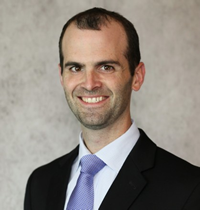 Dr. Fadden joined WJE with 10 years of experience in structural engineering research and consulting. His primary areas of expertise include the design, analysis and evaluation of steel structures (hot-rolled and cold-formed) and reinforced concrete structures. Additionally, Dr. Fadden has expertise in structural evaluation using finite element modeling and structural testing. His experience also includes seismic design, structural vibrations, offshore structures and litigation support.
Dr. Fadden joined WJE with 10 years of experience in structural engineering research and consulting. His primary areas of expertise include the design, analysis and evaluation of steel structures (hot-rolled and cold-formed) and reinforced concrete structures. Additionally, Dr. Fadden has expertise in structural evaluation using finite element modeling and structural testing. His experience also includes seismic design, structural vibrations, offshore structures and litigation support.
Prior to joining WJE, Dr. Fadden was a professor in the Department of Civil, Environmental, and Architectural Engineering at the University of Kansas. There, his research areas included modular systems and connections for steel buildings, bolted and welded connections, ancillary sign structures, structural vibrations, and additive manufacturing for civil infrastructure. Dr. Fadden has authored many technical publications in referenced journals and provided numerous conference presentations.
Dr. Fadden is a member of the American Institute of Steel Construction (AISC), the American Society of Civil Engineers (ASCE), and the Cold-Formed Steel Engineers Institute (CFSEI). He is a registered Professional Engineer in Alabama, Florida, Kansas and Louisiana He earned a B.S. degree in Civil Engineering from the University of Illinois at Urbana-Champaign and M.S. and Ph.D. degrees in Civil Engineering from the University of Michigan.
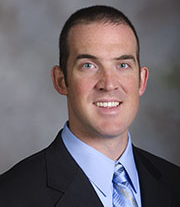 William N. Collins, Ph.D., P.E., University of Kansas
William N. Collins, Ph.D., P.E., University of Kansas
Dr. Collins is the Chair’s Council Associate Professor of Civil, Environmental and Architectural Engineering at the University of Kansas.
Dr. Collins’ expertise is in structural engineering, with a particular focus on fracture and fatigue behavior and metallic infrastructure. He has been associated with numerous projects related to structural behavior, fabrication and inspection. He is active with numerous professional organizations, including TRB, ASTM International and the AASHTO/NSBA Collaboration. Dr. Collins is also engaged in a variety of educational initiatives at the University of Kansas, including the development and implementation of peer mentoring in structural engineering curricula, an effort that has spread to other groups and departments within the university. He was awarded the AISC Milek Fellowship in 2021.
Previously, he was a research engineer at Purdue University and a research/teaching assistant at Virginia Polytechnic Institute and State University (Virginia Tech). He was also a timberwright at Blue Ridge Timberwrights in Christiansburg, Virginia and a construction superintendent at Prospect Homes of Richmond.
Dr. Collins is a registered Professional Engineer in Kansas. He holds B.S., M.S., and Ph.D. degrees in Civil Engineering, Structural Engineering and Materials from Virginia Tech.
In order to receive credit for this course, you must complete the quiz at the end and pass with at least 80% for a certificate to be generated automatically

Webinar on Updates to the AISI North American Specification and Standards
Continuing Education Credits Available – 1.5 PDH Credits
The American Iron and Steel Institute (AISI) has been involved in the support of research and the development and maintenance of cold-formed steel codes, standards and specifications for 90 years. AISI sought American National Standards Institute (ANSI) accreditation and was approved as a developer of American National Standards in 1999.
AISI S100, North American Specification for the Design of Cold-Formed Steel Structural Members and the suite of AISI framing standards are the referenced documents for cold-formed steel design in the International Building Code. Every few years, AISI updates the Specification and standards to add new provisions based on the latest information from research and industry. These updates can deliver improved methods for analyzing members, provide new considerations when designing members and connections, and directly impact the design of floor, wall and roof systems. This webinar will review all of the relevant changes to these AISI documents and how they are intended for implementation into the applicable building codes.
Presenter: Jon-Paul Cardin, P.E.
American Iron and Steel Institute
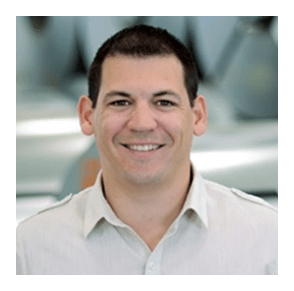 Jon-Paul currently serves as a codes and standards engineer for the American Iron and Steel Institute (AISI). In this position, he represents the interests of the steel construction industry in the national codes and standards arenas. Specifically, Jon-Paul is active in the International Code Council (IBC, IRC), ASCE 7 and NFPA 5000, as well as the AISI Committee on Specifications and AISI Committee on Framing Standards. Prior to joining AISI, Jon-Paul served as the engineering manager for a steel framing manufacturer. He holds Bachelor of Science degrees in both Civil Engineering (Structural) and Mathematics from the University of Idaho.
Jon-Paul currently serves as a codes and standards engineer for the American Iron and Steel Institute (AISI). In this position, he represents the interests of the steel construction industry in the national codes and standards arenas. Specifically, Jon-Paul is active in the International Code Council (IBC, IRC), ASCE 7 and NFPA 5000, as well as the AISI Committee on Specifications and AISI Committee on Framing Standards. Prior to joining AISI, Jon-Paul served as the engineering manager for a steel framing manufacturer. He holds Bachelor of Science degrees in both Civil Engineering (Structural) and Mathematics from the University of Idaho.
In order to receive credit for this course, you must complete the quiz at the end and pass with at least 80% for a certificate to be generated automatically
Price: $100

